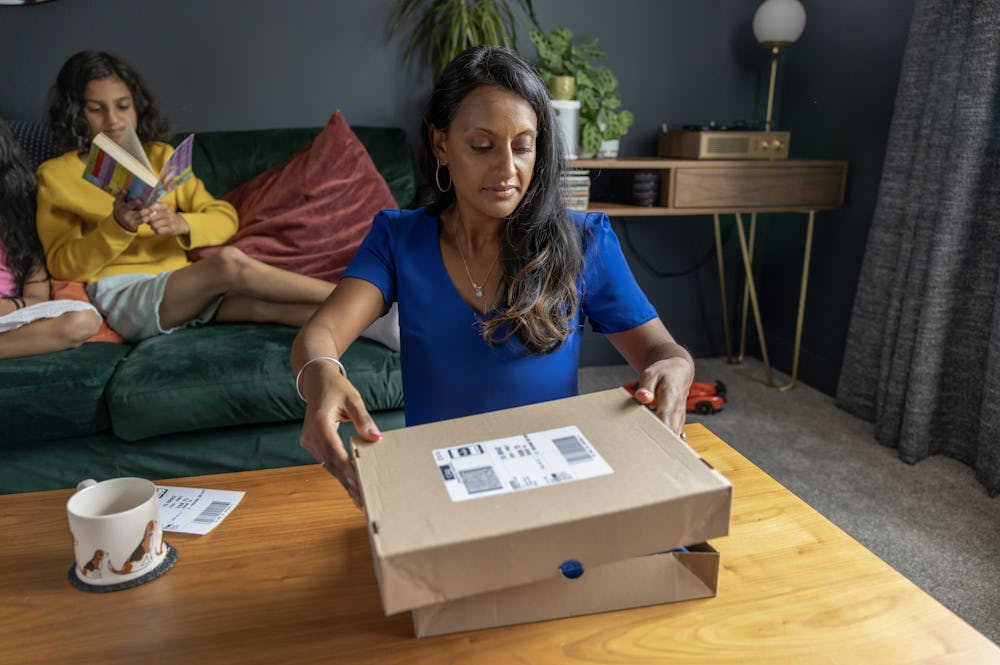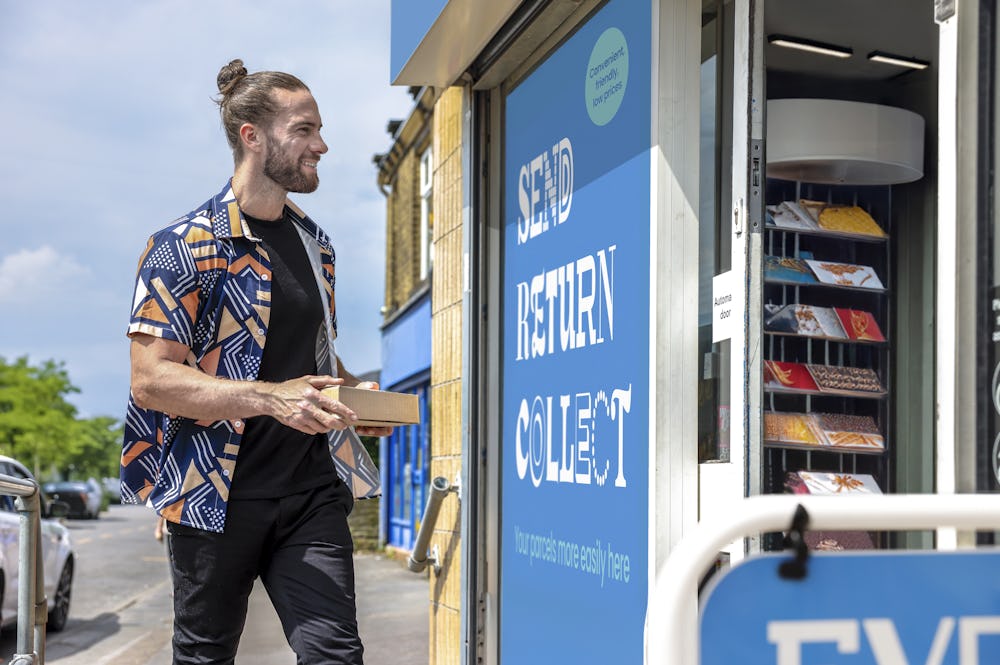How to set up domestic shipping for your business
Here’s what you need to know about setting up domestic shipping for your business

Shipping to your customers domestically
Whether you’re planning on running a side hustle or setting up a full-time business from scratch, it goes without saying that getting your products to your customers is an essential part of any business.
Naturally, this means setting up some form of domestic shipping plan so you can get your neatly taped parcels where they need to go. But if you’ve never had to send business parcels before, you might not be sure where to begin, which is why we’ve pulled together all the tips you need to know to start sending parcels domestically.
From domestic shipping’s meaning to all the essential steps you’ll need to consider before you send your first parcel, our domestic shipping guide has you covered.

What is domestic shipping?
When it comes to the question, ‘What is domestic shipping?’, the clue is in the name. Simply put, domestic shipping refers to any parcel that’s being sent on a local level or within a country’s given borders.
For example, if you were to send a parcel from the south of the UK to the north, this would be considered domestic shipping. However, if you were sending a parcel outside of the UK, this would be considered international shipping – even if it was only going across the channel.
Therefore, you don’t have to deal with any worries over the complexity of parcel customs or the added cost of sending your packages overseas, making it quite easy to set up a domestic shipping process.
1. Forming your domestic shipping strategy
First things first, when it comes to domestic shipping, you need to come up with a domestic shipping strategy to guide your sending process. Think of this like an additional business plan but smaller.
Within this plan, you’ll need to consider all of the following:
- How far you plan to send domestically, especially if you plan on selling perishable goods
- What platform do you intend to send through (e.g.: Etsy, eBay, etc…)
- The cost of your products based on how much shipping could cost
- How you plan to pack your parcels (see our parcel packing guide for tips on this)
- How you plan to handle returns
- Whether or not your chosen sender can cover what you’re sending or if you’ll need to provide additional protective cover in case of item damage
As you might expect, pricing is a particularly important area to get right in this regard. You might already have a base price in mind, one that makes a comfortable profit after initial costs are covered. However, this could change once you factor in the cost of sending, so be sure to adjust your pricing accordingly.

2. Choosing your Courier Service
With all of these considerations made, it’s now time to decide on how you plan to ship your parcels from you to your customers via the cheapest and most efficient method.
For this, we’d recommend using a courier service. Not only do they tend to be quicker and cheaper, but they offer much better flexibility on delivery times – especially if you want to offer something such as Next Day delivery.
For example, you get all of the below benefits when sending with Evri:
- Flexible sending options from our ParcelShops, Lockers, and Courier Collection
- Competitive prices, no matter the number of parcels you send
- The ability to send multiple parcels in one click with our bulk integration tool
- Regular tracking updates on every parcel you send
- Free parcel cover up to a value of £20 for every individual package (excluding Postable parcels)
Of course, it’s always best to do your research to see which courier service best suits your business needs, so take your time with this step.
3. Set up your sending account
With your courier chosen, your next step is to follow their process for setting up a sending account with them. This should be a fairly simple process, however, if you find yourself struggling, you should reach out to their support team for assistance.
For example, when sending with Evri, you only need to follow three simple steps:
- Go to 'Sign up' to create your Evri account
- Fill in your details and contact information
- Once logged in, get started with 'Send' to post your first parcel with us
And that’s it – it really is that simple.

4. Begin the shipping process
Now that you have an account set up with your chosen courier service, all that’s left to do is prepare your first batch of parcels and send them on their way. How you go about doing this is up to you, and the process might differ depending on your chosen delivery service.
We have a whole guide on how to send a parcel with Evri and don’t forget that our bulk integration tool lets you send bundles of parcels together in one single pick-up.
Additional domestic shipping tips
Although we’ve broken down the four major steps you’ll need to follow when sending a parcel domestically, that’s not to say there aren’t still a few additional tips to bear in mind when setting up your delivery process. Here are some extra key points to consider when sending parcels domestically:
Make shipping prices clear
Be sure to lay out clear shipping prices before your customers start the buying process. Unforeseen shipping costs are one of the main reasons customers abandon their carts, so you should make it visible as part of the price when buying.
Provide free shipping
Consider offering free shipping to encourage purchases. You can facilitate this by increasing the pricing slightly to match the delivery costs, depending on distance. Or, alternatively, by providing free shipping when customers spend over a certain amount.
Make use of discounts
Look for shipping discounts so you can save money when delivering parcels in bulk. For example, when you send with Evri, you can get sending discounts on orders worth £30 or more, as well as regular discounts if you opt-in to our email marketing.
Offer returns
Lay out a clear returns policy so that customers can return parcels if needed. This should include information on how to return a parcel, whether or not it’s free, if you offer refunds, etc…
Use multiple sending channels
If you want to increase sending visibility, consider selling through multiple channels. Just make sure that your chosen courier service can accommodate this.
Check for prohibited items
Be sure to check what your chosen courier can and can’t send. The last thing you want is to set up your sending account, only to discover that your courier can’t deliver your goods. Take a look at our prohibited items list to see what our Evri Couriers can and can’t deliver.

Shipping domestically with Evri
There you have it, you should now have all the information you need to ship domestically with Evri. Don’t forget, we have plenty of helpful guides on our guides hub, such as how to set up a side hustle and how to package fragile items.

How can Evri help with your side hustle?
As we’ve already mentioned, if you plan to sell items online as part of your side hustle, then we’re here to lend a hand. In fact, you can make use of all of these great benefits if you send through us:
- Great value prices starting from as little as £2.62
- Standard and Next Day delivery options
- Flexible sending options from our ParcelShops, Lockers, and Couriers
- International sending options for parcels going overseas
- Regular tracking updates via our website and app
- Free parcel cover up to a value of £20. Excludes Postable parcels
- Multiple parcel sending with our Bulk Integration tool
Start sending through Evri with your side hustle today!

